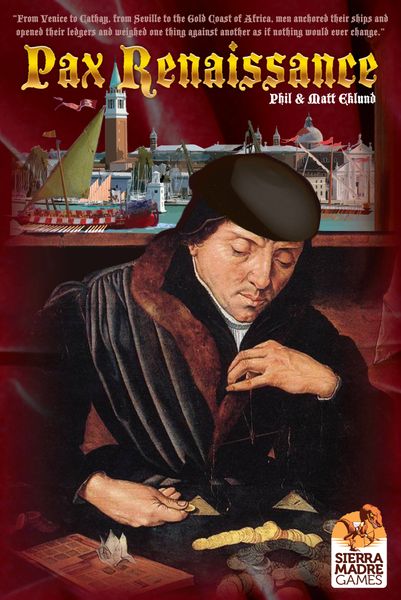Pax Renaissance (2016) Board Game
Pax Renaissance is a strategy board game that was released in in 2016. Designed by Phil Eklund and published by Sierra Madre Games, the game is set during the Renaissance period, a time of great cultural and intellectual change in Europe. Players take on the role of powerful bankers and merchants who seek to exert their influence over the political landscape of the time.
Game Components of Pax Renaissance
How To Setup Pax Renaissance
Setup involves preparing the game board, shuffling and dealing the card markets, and distributing the initial Florins and pieces. Players choose their starting positions and set up their banking businesses. The detailed rules and setup can be found in the downloadable rules or through playthrough videos, but essentially, players must ready the board to reflect the European and Mediterranean landscapes of the 15th to 16th centuries.
Gameplay Mechanics and Game Objective
Mechanics
Game Objective
The objective is to determine the ideological fate of Europe by working towards one of five distinct victory conditions:
The game ends when a comet card is drawn, and the player who best aligns with the prevailing ideology wins.
Player Experience
Playing Pax Renaissance is a deeply immersive and strategic experience. Players must navigate complex rules and historical context, often feeling like they are manipulating the strings of history. The game demands attention to other players’ progress, as each action can significantly impact the overall direction of the game. It is a sandbox experience where players can pursue multiple goals simultaneously, engaging in trade disputes, mercenary clashes, and religious squabbles.
Pros
Cons
Personal Thoughts on Pax Renaissance
Pax Renaissance is for experienced board game enthusiasts who appreciate deep strategy, historical context, and complex gameplay mechanics. It is ideal for those who enjoy games like Illuminati or other titles in the Pax series. While it can be intimidating for new players, veterans of the series and those willing to invest time in learning the rules will find it incredibly rewarding. This game is not for casual players but is a triumph for those who relish the intricacies of historical simulation and strategic depth.
We are supported by our audience. When you purchase through links on our site, we may earn an affiliate commission, at no extra cost for you. Learn more.

